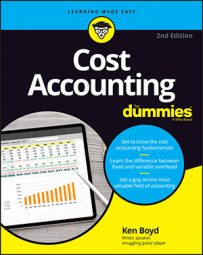Advertising is a very common line item in cost accounting. When you advertise, you obviously spend company resources. You need to know if the additional cost will generate higher profits.
A marketing executive used to tell potential clients, “If you don’t advertise, nothing happens.” Sure, he was trying to sell advertising, but he had a point. You need to consider the financial impact of your decision to advertise. Specifically, will your sales increase to “make up” for the advertising expense and result higher profits? Cost-volume-profit is the perfect tool to assess advertising decisions.
The old saying is, “It pays to advertise.” But it costs, too. Did you ever hear the old not-so-funny costing joke? CFO: “And further, ladies and gentlemen of the board, think of the money we’ll save by not advertising!” That guy is now a hobo, roasting weenies under a railroad bridge somewhere.
Assume your business sells books online, and your sales total 5,000 units. Your sale price is $25 per unit, variable costs are $15 per unit, and fixed costs total $10,000.
Use the formula for the breakeven point, and solve the formula for profit:
Profit = $25 x (5,000) – $15 x (5,000) – $10,000
Profit = $125,000 – $75,000 – $10,000
Profit = $40,000
So far, so good. Next, you decide to spend $7,000 on advertising. The cost is fixed, regardless of how many books you sell. Total fixed costs increase from $10,000 to $17,000.
You expect the advertising to increase your book sales by 10 percent. The new total would be 5,500 units (5,000 units x 110%). What is your new profit level?
Profit = $25 x (5,500) – $15 x (5,500) – $17,000
Profit = $137,500 – $82,500 – $17,000
Profit = $38,000
In this case, you’re actually worse off. Your profit is $2,000 lower than before. For this product, at this time, the advertising didn’t work. The correct decision here is not to advertise, because your profit will decrease.
What if sales increase 20 percent? Plugging your new sales number of 6,000 into the formula, you’ll see a $43,000 profit. In this case, you’re better off with the advertising expense. Your profit is $3,000 higher. The cost of advertising is the same, so it’s possible you spent the advertising dollars in a better way.
If people buy your products whether or not you advertise, there isn’t much sense in advertising.

